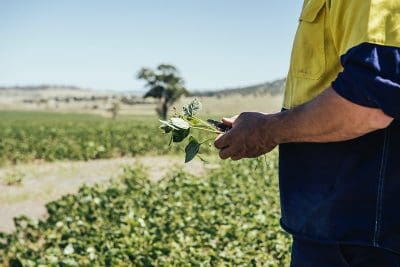MUNGBEAN markets remain attractive for growers with the majority of last season’s crop now sold.

Mungbeans are an excellent option to factor in to the summer cropping program. AMA-approved seed provides the best assurances for highest possible seed purity, best seedling vigour and minimised risk of seed-borne disease.
While price is important, it is pre-export value-adding that really maximises returns to growers and maintains Australia’s reputation for high quality product in the global marketplace.
Demand across all markets remains strong for good quality beans with prices expected in the range of $800 to $1100 per tonne for processing quality beans in 2017–18.
Woods Grains’ grain buying and marketing manager, Bruce Woods, said experienced growers were making enquiries now to secure seed and other supplies, ready to take advantage of rain whenever it falls.
“There are areas where the winter crop has suffered from lack of rain and growers might be keen to plant an early crop of mungbeans if sufficient rain falls next month or early October,” he said.
“For many though the safer option is to hold some area for planting mungbeans in January or February 2018.
“Last summer’s heat wave had a very bad impact on early sown crops and I’d expect many growers to shy away from the earlier planting window.
“If growers do plant early they would probably want to have the crop harvested in December at the latest.”
To make the most of the opportunities to produce mungbeans the Australian Mungbean Association encourages growers to purchase AMA-Approved seed and negotiate area contracts available to them through packing plants.
These contracts reduce production risks as all quality grades will be accepted and the relevant contracted price paid on delivery.
This means that even if the season is not favourable and crops do not meet the tonnage, quality or delivery timing hoped for, the mungbeans produced will be accepted at the relevant contract price.
The grading of the Australian mungbean crop into No. 1, processing and manufacturing grades value-adds to the product and allows growers to maximise their returns.
Value-adding before export means the best quality grain can be marketed into the highest returning markets.
Lower quality product can also be marketed to achieve the highest return without compromising the value of high grade beans.
Last season there was considerable interest in mungbean production in all the traditional growing areas and as far south as Dubbo in central NSW.
Although the season was harsh for all summer crops, the total mungbean production was around 65,000 tonnes and the industry expects a similar level of interest this year or higher if the coming season is favourable.
Managing nitrogen supply
Although mungbeans fix their own nitrogen supply when the seed is inoculated with the correct rhizobium bacteria, some growers are applying nitrogen (N) prior to planting in addition to, or instead of inoculating.
Pulse Australia’s Paul McIntosh said that for this practice to work effectively, the nitrogen must be applied pre-plant so a subsequent rain event can push the nitrogen deeper into the soil profile where the roots of the young mungbean plants can access it early in the crop’s development.
“A nutrient analysis of the soil profile well in advance of planting will help avoid having a sad, nitrogen-deprived mungbean crop three to four weeks after planting,” he said.
“There is no advantage in applying a high rate of nitrogen fertiliser and also applying inoculant, because rhizobia will only fix nitrogen effectively if the soil nitrogen levels are low.
“However, if your applied nitrogen remains positioned in the drier top soil layer, then seed inoculation may still be very effective.”
If nodulation is effective, mungbeans can fix about 60 to 70 kilograms of N/hectare, which is sufficient to grow a 1t/ha crop.
If the rhizobial inoculant is not applied or if the bacteria are exposed to high temperatures and die, this nitrogen will need to come from residual nitrogen reserves in the soil or from a pre-plant application of urea or Big N.
High biomass crops and narrow row spacing promote increased nitrogen production through fixation, contributing more to the N-budget of the rotation.
Source: Australian Mungbean Association: www.mungbean.org.au


HAVE YOUR SAY